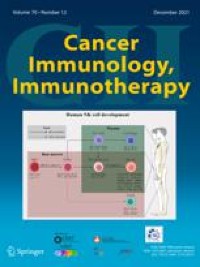|
Medicine by Alexandros G. Sfakianakis,Anapafseos 5 Agios Nikolaos 72100 Crete Greece,00302841026182,00306932607174,alsfakia@gmail.com,
Αρχειοθήκη ιστολογίου
-
►
2023
(272)
- ► Φεβρουαρίου (141)
- ► Ιανουαρίου (131)
-
►
2022
(2066)
- ► Δεκεμβρίου (80)
- ► Σεπτεμβρίου (170)
- ► Φεβρουαρίου (190)
- ► Ιανουαρίου (203)
-
▼
2021
(7399)
- ► Δεκεμβρίου (186)
- ► Σεπτεμβρίου (472)
-
▼
Φεβρουαρίου
(851)
-
▼
Φεβ 01
(41)
- CD30 + OX40 + Treg is associated with improved ove...
- Mohs Micrographic Surgery in Dermatofibrosarcoma P...
- Hemodynamic Changes Associated With Transcervical ...
- Evaluation of Voice and Vocal Fold Vibration after...
- Hydration State and Hyaluronidase Treatment Signif...
- Temporal bone primary inverted papilloma – Case Re...
- Synergistic quinolone sensitization by targeting r...
- Cefazolin in the Serum and Hip Joint Capsule of Pa...
- Epidemic territorial spread of IncP-2-type VIM-2 c...
- Parasite-host dynamics throughout antimalarial dru...
- Pharmacokinetic study of rectal artesunate in chil...
- Comparative efficacy of the novel diarylquinoline ...
- Alteration in the Acute Kidney Injury Potential wi...
- Bictegravir+tenofovir alafenamide nanoformulation ...
- Cefiderocol Against Stenotrophomonas maltophilia
- Therapeutic cardiac arrest as an adjunct to resusc...
- The swine as a vehicle for research in trauma-indu...
- Ethinyl estradiol sulfate acts without fluid resus...
- Administration of valproic acid in clinically appr...
- Interleukin 22 mitigates endothelial glycocalyx sh...
- Time to weigh in on obesity and associated comorbi...
- Long-term outcomes of psychoactive drug use in tra...
- Diagnostic accuracy of prehospital triage tools fo...
- Roadway features associated with elderly drivers i...
- A meta-analysis of the diagnostic accuracy of ches...
- Increasing BMI is associated with higher mortality...
- The expression of repulsive guidance molecule a af...
- Antithrombin III ameliorates post–traumatic brain ...
- Comparison of massive and emergency transfusion pr...
- Hypocalcemia in trauma patients: A systematic review
- Distinct immunologic endotypes are associated with...
- Freeze-dried platelets promote clot formation, att...
- External validation of a nomogram predicting risk ...
- Bile duct clearance and cholecystectomy for choled...
- Hybrid emergency room shows maximum effect on trau...
- Universal screening for blunt cerebrovascular injury
- Do patients with minimal blunt thoracic aortic inj...
- Antiplatelet and anticoagulant agents have minimal...
- Increased Incidence of Inflammatory Bowel Disease ...
- Connectome-Based Predictive Modeling of Individual...
- Chandelier Cartridge Density Is Reduced in the Pre...
-
▼
Φεβ 01
(41)
-
►
2020
(2517)
- ► Δεκεμβρίου (792)
- ► Σεπτεμβρίου (21)
- ► Φεβρουαρίου (28)
-
►
2019
(12076)
- ► Δεκεμβρίου (19)
- ► Σεπτεμβρίου (54)
- ► Φεβρουαρίου (4765)
- ► Ιανουαρίου (5155)
-
►
2018
(3144)
- ► Δεκεμβρίου (3144)
Ετικέτες
Πληροφορίες
Δευτέρα 1 Φεβρουαρίου 2021
CD30 + OX40 + Treg is associated with improved overall survival in colorectal cancer
Mohs Micrographic Surgery in Dermatofibrosarcoma Protuberans
|
Hemodynamic Changes Associated With Transcervical Laryngeal Injection of Botulinum Toxin
|
Evaluation of Voice and Vocal Fold Vibration after Thyroidectomy Using Two-Dimensional Scanning Digital Kymography and High-Speed Videolaryngoscopy
|
Hydration State and Hyaluronidase Treatment Significantly Affect Porcine Vocal Fold Biomechanics
|
Temporal bone primary inverted papilloma – Case Report and review of the literatureInvertiertes Papillom des Felsenbeins – Fallbericht und Literaturübersicht
|
Synergistic quinolone sensitization by targeting recA SOS response gene and oxidative stress [Mechanisms of Action]
|
Cefazolin in the Serum and Hip Joint Capsule of Patients Undergoing Total Hip Arthroplasty [Pharmacology]
|
Epidemic territorial spread of IncP-2-type VIM-2 carbapenemase-encoding megaplasmids in nosocomial Pseudomonas aeruginosa populations [Epidemiology and Surveillance]
|
Parasite-host dynamics throughout antimalarial drug development stages complicate the translation of parasite clearance [Pharmacology]
|
Pharmacokinetic study of rectal artesunate in children with severe malaria in Africa [Pharmacology]
|
Comparative efficacy of the novel diarylquinoline TBAJ-587 and bedaquiline against a resistant Rv0678 mutant in a mouse model of tuberculosis [Experimental Therapeutics]
|
Αναζήτηση αυτού του ιστολογίου
! # Ola via Alexandros G.Sfakianakis on Inoreader
-
Does CBD Oil Lower Blood Pressure? This article was originally published at SundayScaries." Madeline Taylor POSTED ON January 13, 20...
-
Abstract Purpose Clinicians must balance the risks from hypotension with the potential adverse effects of vasopressors. Experts have rec...



